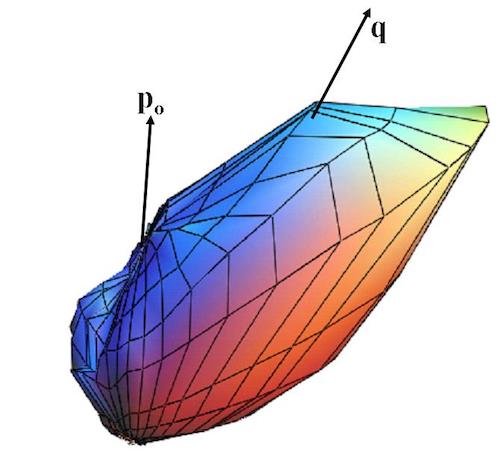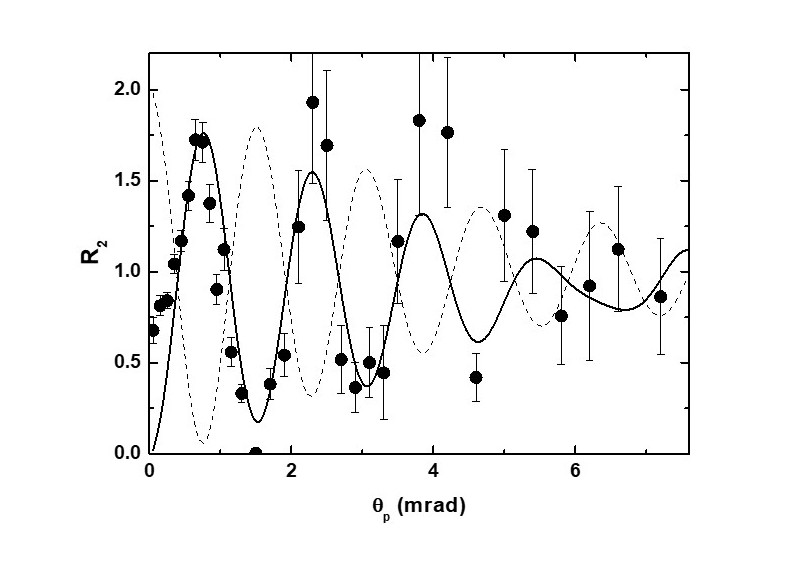Research Groups
Schulz Group
Missouri University of Science and Technology
The research activities on ion-atom collisions at Missouri S&T comprise both experimental and theoretical studies. The experimental activities focus on kinematically complete experiments on ionization and, to a lesser extent, capture processes in simple collision systems. A kinematically complete experiment is one in which the momenta of all collision fragments are determined. In the case of ionization these are the scattered projectile, the recoiling residual target ion, and the ejected electron. On the other hand, because of momentum conservation it is sufficient to directly measure the momenta of two of the three fragments. In our set-up the momenta of the scattered projectiles and of the recoil ions are measured directly and the ejected electron momentum is deduced from momentum conservation. From the data fully differential cross sections (FDCS) are extracted and used to sensitively test theoretical predictions. An example of a fully differential angular distribution of electrons ejected in 75 keV p + H2 collisions is shown in Fig. 1.

More recently, we have also performed a fully differential study of dissociative capture in 75 keV p + He collisions. Fig. 2 shows the two-center molecular interference term extracted from the data. The pattern reveals a π phase shift relative to theoretical predictions, which is not completely understood yet. However, it is probably related to parity conservation and possibly to entanglement between the projectile and molecular states.

The theoretical activities on ion-atom collisions at S&T focus on calculations for the cross sections measured in the experiments described above. The models are based on perturbative approaches, where the few-body dynamics is described in terms of powers of the perturbation potential (i.e. the projectile – target atom interaction). The goal is to accurately predict the relative importance of the first-order and the various higher-order contributions to the total transition amplitude for the process of interest. Two classes of perturbative approaches are usually pursued. In one, the higher order contributions are accounted for in the operator of the transition amplitude (Born series). In the second, the higher-order contributions are contained in the final-state wavefunction of the collision system. The theory group at S&T focuses on the latter approach.
The theoretical activities on ion-atom collisions at S&T focus on calculations for the cross sections measured in the experiments described above. The models are based on perturbative approaches, where the few-body dynamics is described in terms of powers of the perturbation potential (i.e. the projectile – target atom interaction). The goal is to accurately predict the relative importance of the first-order and the various higher-order contributions to the total transition amplitude for the process of interest. Two classes of perturbative approaches are usually pursued. In one, the higher order contributions are accounted for in the operator of the transition amplitude (Born series). In the second, the higher-order contributions are contained in the final-state wavefunction of the collision system. The theory group at S&T focuses on the latter approach.
Contact
Professor Michael SCHULZ
Group Website
References
- [1] M. Schulz et al., "Three-Dimensional Imaging of Atomic Four-Body Processes", Nature 422, 48 (2003).
- [2] N. V. Maydanyuk et al., "Projectile–Residual-Target-Ion Scattering after Single Ionization of Helium by Slow Proton Impact", Physical Review Letters 94, 243201 (2005).
- [3] A. C. Laforge et al., "Three-Body Dynamics in Single Ionization of Atomic Hydrogen by 75 keV Proton Impact", Physical Review Letters 103, 053201 (2009).
- [4] K. N. Egodapitiya et al., "Manipulating Atomic Fragmentation Processes by Controlling the Projectile Coherence", Physical Review Letters 106, 153202 (2011).
- [5] K. Schneider et al., "Role of Projectile Coherence in Close Heavy Ion-Atom Collisions", Physical Review Letters 110, 113201 (2013).
- [6] B. R. Lamichhane et al., "Fully Differential Study of Capture with Vibrational Dissociation in p + H2 Collisions", Physical Review Letters 119, 083402 (2017).